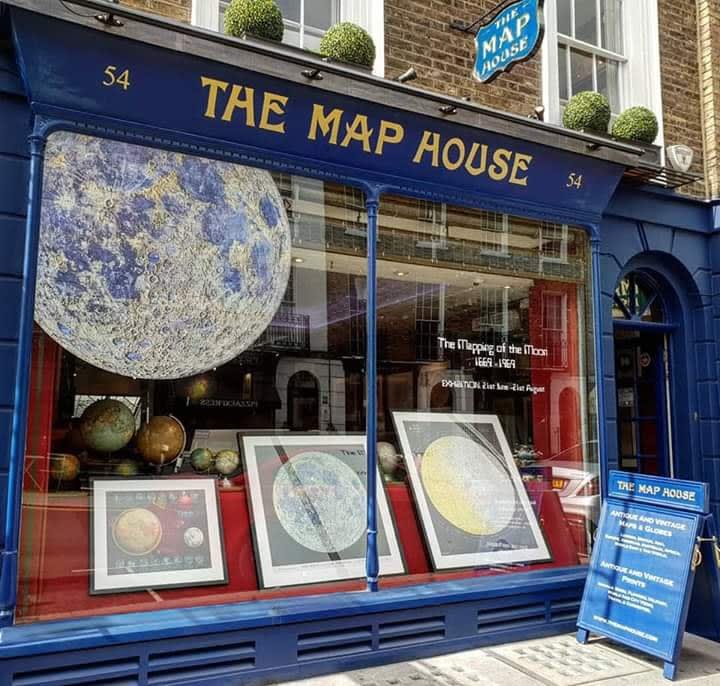The exhibition, The Mapping of the Moon: 1669-1969, explores 300 years of lunar and celestial cartography from early astronomers in the 17th century to the Apollo 11 mission in July 1969 and beyond.

The exhibition includes rare early 17th and 18th Century observations of the moon from astronomers such as Athanasius Kircher and Jean-Dominique Cassini, important maps produced by NASA for lunar exploration, globes and signed material by astronauts Neil Armstrong, Buzz Aldrin, Alan Bean and Jim Lovell.
20th Century Lunar Maps, Globes & Memorabilia
The launch of Russia’s satellite Sputnik I in 1957 and the first manned space flight mission by cosmonaut Yuri Gagarin in 1961, the space race between Russia and the U.S. had begun, capturing the imaginations of millions around the world. Observatories and institutions assisted in producing highly detailed lunar maps, track charts and photographs. The publication of moon maps was an important propaganda tool to promote the space race during the Cold War.
The Map House brings together a curated collection, including the U.S. Air Force Lunar Wall Mosaic (1963), an amazingly detailed map compiled from thousands of photographs painstakingly joined to form the most accurate map of the moon to date.
The exhibition also features signed memorabilia that evokes the celebrity status of the astronauts. These include a 1969 ‘internal use only’ map marking the historic Apollo 11 landing site in the Sea of Tranquillity signed by Buzz Aldrin and a Philip’s map of the moon showing all six Apollo program landing sites signed by Neil Armstrong. Also on display is a signed large-format photograph of Apollo 12 Lunar Module Pilot Alan Bean on the moon in November 1969, with a poignant quote from author Rudyard Kipling.
Alongside the scientific diagrams and highly detailed maps are illustrations by prominent artists of the period striving to present a vision of the new future in space.
A striking example is an pictorial map of the moon with five potential landing sites marked, produced by aerospace manufacturer North American Rockwell published prior to the landing in July 1960s. A simple version of NASA’s Lunar Landing Mission diagram. Lines from President Kennedy’s famous speech to Congress in May 1961 circle the moon: “No single space project in this period will be more exciting or more impressive to mankind or more important for the long-range exploration of space.”
17th-20th Century Astronomical Objects
The Mapping of the Moon will also offer visitors a broader history of lunar and celestial mapping, illustrating mankind’s fascination with the night sky. Maps, globes, lightboxes, star charts and 3D models dated from 1660s onwards show our natural compulsion to look beyond our home planet.
Tycho Brahe’s map of the solar system, with the sun and moon both orbiting the earth shows an extraordinary attempt to combine the 17th Century astronomical observations with the previously accepted classical model. The exhibition will also include 19th century educational charts showing the constellations and phases of the moon, a superb rare brass model of the solar system dated 1872, and a stunning blue and gold early 20th century celestial globe illustrated with the zodiac.
In recognition of the continued interest in the moon the exhibition will also feature a collection of exquisite miniature porcelain moon globes created by contemporary artist Loraine Rutt of
The Little Globe Co.
Exhibition runs 21st June until 21st August 2019 at The Map House, 54 Beauchamp Place, London SW3 1NY.

















